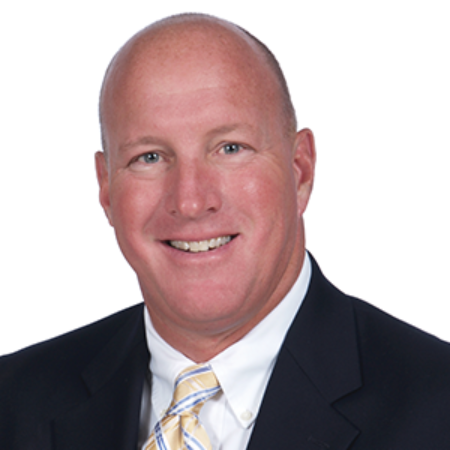Cleaning can be hazardous to the health of cleaning workers — an undeniable fact that should not be ignored.
Unfortunately, placing emphasis on cleaning worker safety seems to go in and out of style.
Although the industry is deeply involved at the moment in discussions about “cleaning for health,” these conversations tend to address the needs of everyone except the cleaning workers actually performing these tasks.
The bottom line is that for the 2.5 million or more cleaning workers in the U.S., cleaning work is a risky, dangerous profession.*
Cleaning workers are regularly exposed to risks and hazards including walking on wet and slippery floors; climbing ladders or stretching to reach high and low areas; frequent bending and lifting; repetitive movements and motions and awkward physical positions; and carrying tools and equipment that can vary significantly in size, weight and balance.
For many cleaning workers, these risk factors often lead to musculoskeletal disorders (MSDs) and other work-related injuries.
This is likely why, according to the Department of Labor’s Bureau of Labor Statistics, “Janitors and building cleaners have one of the highest work-related injury rates. Workers may suffer cuts, bruises and burns from machines, tools and chemicals . . . when working.”
The good news is that proper training and education of cleaning workers makes almost every cleaning task safer.
Manufacturers can also play a key role by manufacturing tools and equipment that “work with the worker” — in other words, tools that are more ergonomically designed.
The following discusses how equipment with more advanced designs can make some of the most common cleaning tasks safer.
Floorcare
Floorcare has long been the riskiest task when it comes to cleaning worker safety.
For one, some rotary-type floor machines have narrow handles that can place the operator’s arms and wrists in awkward positions.
Further, when starting up some older floorcare equipment, the machine can produce a lot of torque (twisting or turning force), which is then transferred to the operator’s hands, requiring the operator to use a considerable amount of grip force to control the machine.
These machines also require a lot of grip force when used for buffing.
Torque and vibration can be more of a problem with older machines because they are more likely to become slightly out of balance over time.
All of these issues can eventually lead to MSDs.
To resolve these issues, facility managers should replace older machines with newer floorcare equipment whenever possible.
Almost all cleaning equipment manufacturers have made considerable progress in recent years in designing lighter equipment that is easier to use and more ergonomic.
Many walk-behind or ride-on machines no longer require the grip force necessary to operate a typical rotary machine, so switching to these models can help prevent injuries as well.
Another development in floorcare is the use of smaller floorcare machines, such as smaller automatic scrubbers.
These systems can perform well and are much lighter and easier to use and maneuver than larger, more traditional equipment.
Further, cylindrical brush floor machines, now available from different manufacturers, have proven to be easy to learn and easy to use.
Mopping
Like using a floor machine, mopping floors is also high on the list of risk factors.
Most traditional mopping is performed using buckets that can weigh as much as 40 pounds when full of water.
In many cases, workers must lower buckets from a waist-high sink to the floor for use, and then lift it back up to the sink to dump and refill it.
Even if there is a drain area on the floor, in most cases workers must bend or squat to tilt and drain the bucket.
All of these motions increase the risk of developing MSDs.
In addition, frequently wringing out a wet string mop, as well as the mopping process itself, involves considerable repetitive motion, another risk factor.
Switching from a string mop to a flat mop where appropriate can do a great deal to minimize these risks.
Flat mops are far lighter than conventional mops, and use less water, so floors dry faster, reducing the risk of slip and fall accidents.
If workers must use a waist-high sink, investing in a short hose to fill the mop bucket instead of lifting it to do so can minimize health risks.
Cleaning workers should also try to select light, adjustable mop handles that can be fitted to the user.
Vacuuming
Vacuuming is the one task that virtually every cleaning worker performs on a regular basis — and unfortunately, it also tends to be one of the riskiest when it comes to MSDs and other injuries.
The biggest problems with vacuuming are usually the constant back and forth motion required to perform the task and the amount of grip force necessary to use the machine.
Additionally, injuries sometimes result from repeatedly lifting and lowering the machine off an equipment cart.
Finally, noise can also be a risk factor.
Repeated exposure to excessive noise tends to cause worker fatigue, which can negatively affect productivity.
Newer vacuum cleaners have several improvements — including lighter weight, adjustable handles and reduced noise — that make them easier to use, and they are also far more ergonomic.
Some workers find self-propelled vacuum cleaners less stressful to use as well; however, while this feature may have some benefits, it can also add considerable weight to the machine.
This extra weight can create issues if workers must lift the machine, and can in some cases make the machine more difficult to use.
Another option that may suit many cleaning workers is switching from an upright vacuum to a backpack vacuum.
While the original backpacks had a number of issues that made them uncomfortable to use, most manufacturers have addressed these concerns with newer models.
Further, recent developments in harness designs have made wearing a backpack vacuum cleaner far more comfortable.
Similar to the backpacks used for hiking and camping, these harnesses help balance and stabilize the machine on the user’s back reducing a number of cleaning risk factors.
Worker Involvement
While manufacturers are making significant inroads in reducing injuries to cleaning workers, cleaning professionals certainly must be involved in the process as well.
Training and education regarding how to use cleaning equipment safely are imperative, and cleaning workers should also be encouraged to discuss any physiological issues they may be having using cleaning equipment or performing cleaning tasks.
Identifying problems can drive the search for solutions, making cleaning a far less risky profession.
*The Bureau of Labor Statistics estimates that there are about 2.5 million cleaning workers in the United States. However, the real figure is likely much higher, as this number may not include part-time workers, people that own their own companies (and thus may not be counted as “employees”), and other cleaning workers who, for whatever reason, fall outside of the classification of “full-time employee.”



